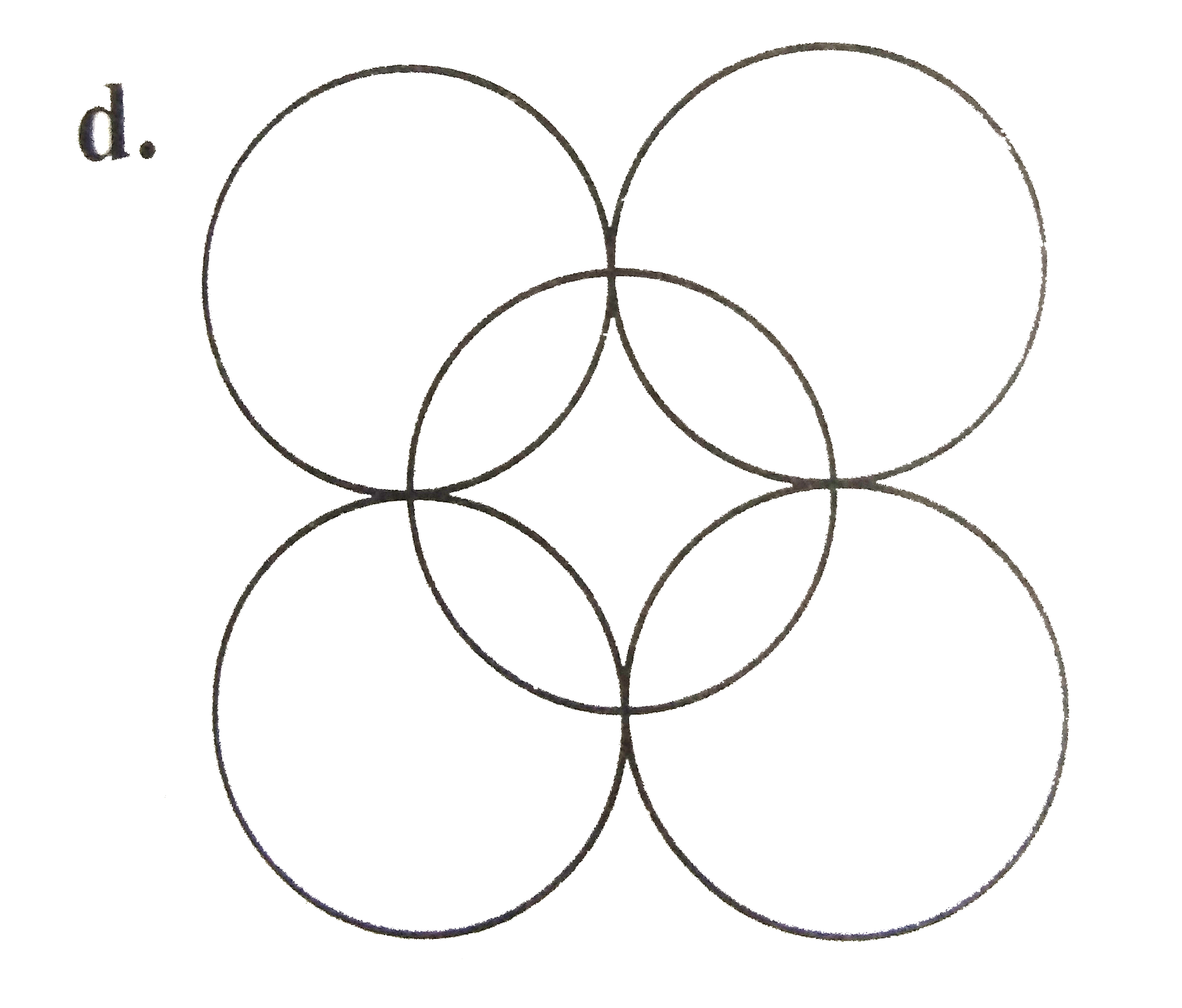AX,AY,BX, and BY have rock salt type structure with following internuclear distances:
∣∣
∣
∣
∣
∣
∣
∣∣SaltAnion-anionCation-aniondistance inÅdistance inÅAX2.401.70AY1.631.15BX2.661.88By2.091.48∣∣
∣
∣
∣
∣
∣
∣∣
The structure given below is of

AX
AY,BX
AY,BX,BY
AY,BX,BYandKCI
The correct Answer is:D
Yɵ is small than Xɵ.
The difference in internucler distanc between AX and BX indicates that the cation must not be touching apl the anions in AX (smaller cation, larger anion) [see Q.10, Fig.(a)]. There must ve anion-anion contact is this compound.
∴ Anion-anion ditance = 2rɵ
The remaining radius ratio is represented in (see Q.9 Figure].
b. Radius of Xɵ(rɵ)=2.402=1.20Å
Radius of B⊕(r⊕)=(1.88−1.20)Å=0.68Å
c. Similarly, radius of Yɵ(rɵ)=(1.48−0.68)=0.80Å
Radius of A⊕(r⊕)=(1.15−0.80)Å=0.35Å
As explained above.
Topper's Solved these Questions
- SOLID STATEBOOK - CENGAGE CHEMISTRYCHAPTER - SOLID STATEEXERCISE - Exercises (Multiple Correct)
39 Videos
- SOLID STATEBOOK - CENGAGE CHEMISTRYCHAPTER - SOLID STATEEXERCISE - Exercises (Single Correct)
72 Videos
- SOLID STATEBOOK - CENGAGE CHEMISTRYCHAPTER - SOLID STATEEXERCISE - Solved Examples
13 Videos
- REDUCTION AND OXIDATION REACTION OF ORGANIC COMPOUNDSBOOK - CENGAGE CHEMISTRYCHAPTER - REDUCTION AND OXIDATION REACTION OF ORGANIC COMPOUNDSEXERCISE - SUBJECTIVE TYPE
3 Videos
- SOLUTIONSBOOK - CENGAGE CHEMISTRYCHAPTER - SOLUTIONSEXERCISE - Ex 2.3 (Objective)
9 Videos
Similar Questions
Suggest the probable structures of the unit cells of the following each compound with the help of given data
∣∣ ∣ ∣ ∣ ∣ ∣∣Cationic radiusAnionic radius(a)RbBe1.04Å1.95Å(b)MeTe0.65Å2.21Å(c)MgO0.65Å1.40Å(d)BaO1.35Å1.40Å∣∣ ∣ ∣ ∣ ∣ ∣∣
View SolutionSolve the following linear equations:
ax+by=c
bx+ay=1+c
View Solution
Knowledge Check
AX,AY,BX, and BY have rock salt type structure with following internuclear distances:
∣∣ ∣ ∣ ∣ ∣ ∣ ∣∣SaltAnion-anionCation-aniondistance inÅdistance inÅAX2.401.70AY1.631.15BX2.661.88By2.091.48∣∣ ∣ ∣ ∣ ∣ ∣ ∣∣
Which of the following structure is, respectively, by Ax?
 A
A B
B C
C D
D
AX,AY,BX, and BY have rock salt type structure with following internuclear distances:
∣∣ ∣ ∣ ∣ ∣ ∣ ∣∣SaltAnion-anionCation-aniondistance inÅdistance inÅAX2.401.70AY1.631.15BX2.661.88By2.091.48∣∣ ∣ ∣ ∣ ∣ ∣ ∣∣
A salt MY crystallizes in the CsCl structure. The anions at the corners touch each other and cation is in the centre. The radius ratio (r⊕/rΘ) for this structure isA0.225B0.414C0.732D1.0AX,AY,BX, and BY have rock salt type structure with following internuclear distances:
∣∣ ∣ ∣ ∣ ∣ ∣ ∣∣SaltAnion-anionCation-aniondistance inÅdistance inÅAX2.401.70AY1.631.15BX2.661.88By2.091.48∣∣ ∣ ∣ ∣ ∣ ∣ ∣∣
Ionic radii of A⊕ and B⊕, respectively, areA0.35 and 0.68ÅB0.68 and 0.35ÅC1.20 and 0.80ÅD0.80 and 1.20Å
AB' has rock salt structure. Radius of cation is 100pm. If the radius of anion is 1.6 times that of cation then the edge length of unit cell "AB" will be
View Solution'AB' has rock salt structure. Radius of cation is 100pm. If the radius of anion is 1.6 times that of cation then the edge length of unit cell "AB" will be
View SolutionAX,AY,BX, and BY have rock salt type structure with following internuclear distances:
∣∣ ∣ ∣ ∣ ∣ ∣ ∣∣SaltAnion-anionCation-aniondistance inÅdistance inÅAX2.401.70AY1.631.15BX2.661.88By2.091.48∣∣ ∣ ∣ ∣ ∣ ∣ ∣∣
Ionic radii of X⊕ and YΘ, respectively, are
View SolutionA compound AB has NaCl type structure. The face diagonal of the compound is 120√2 pm. Calculate the distance between cation and anion.
View SolutionIf Ax+By=1 is a normal to the curve ay=x2, then :
View Solution
